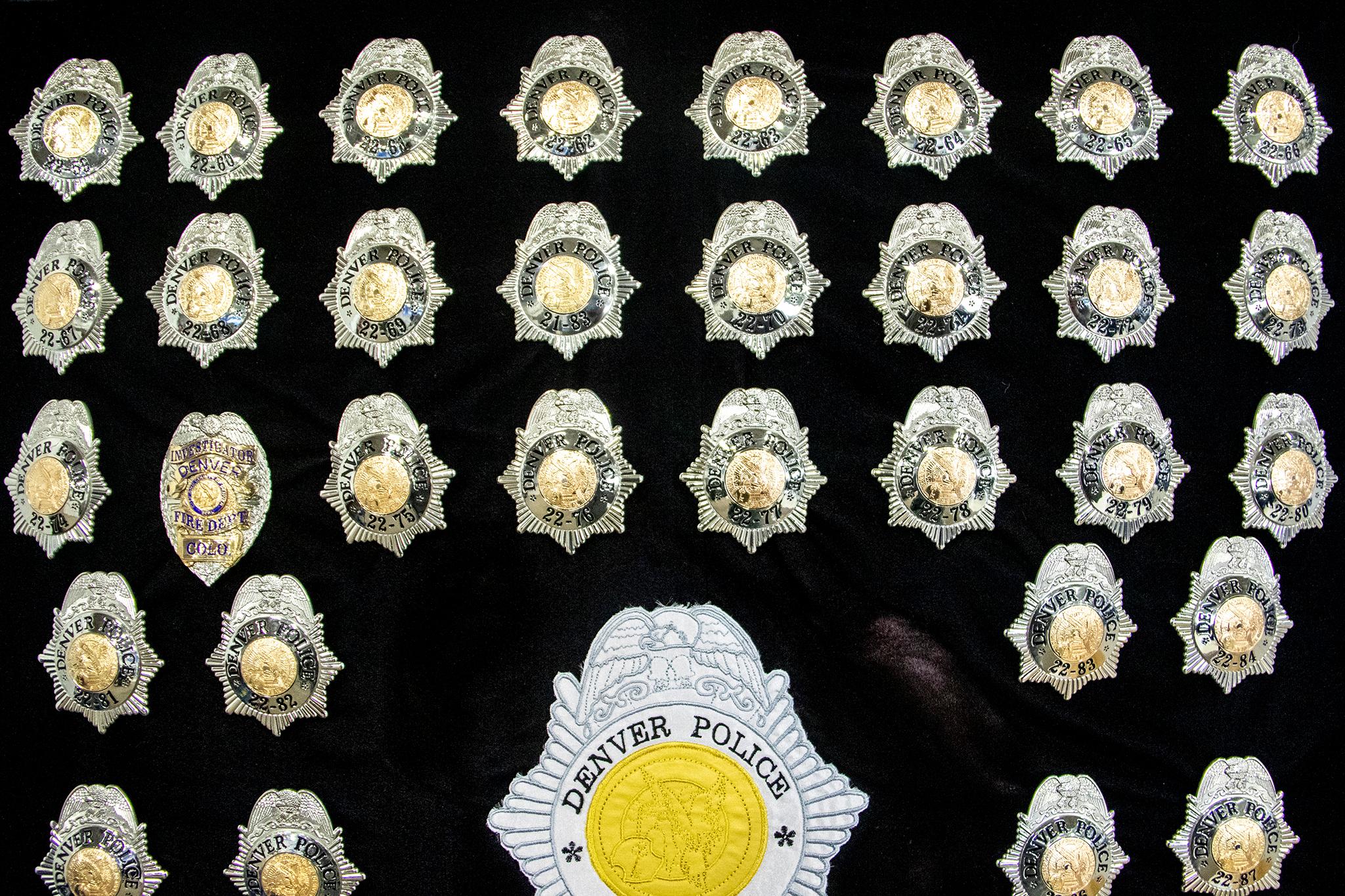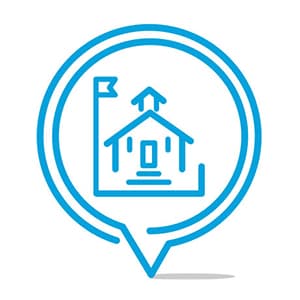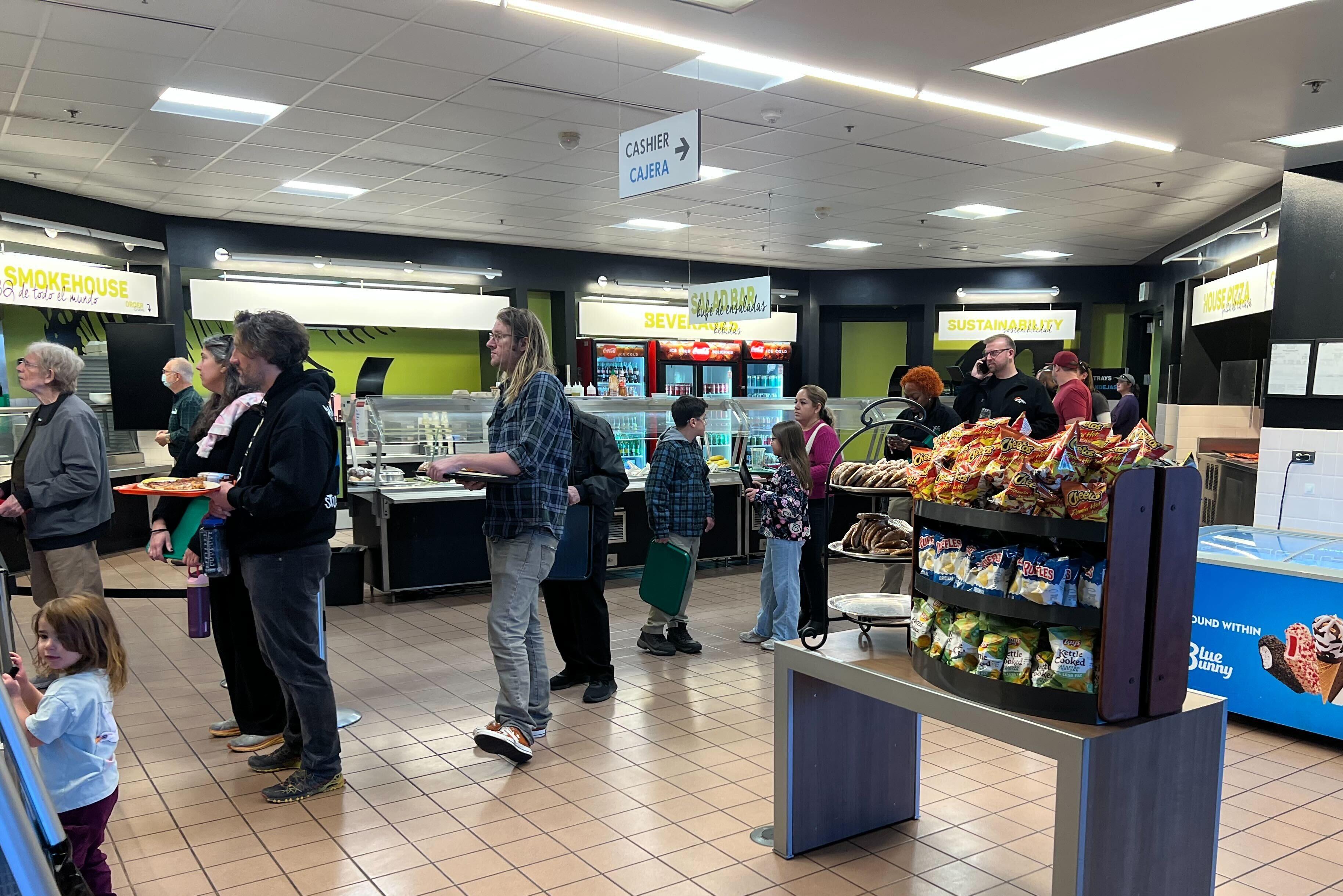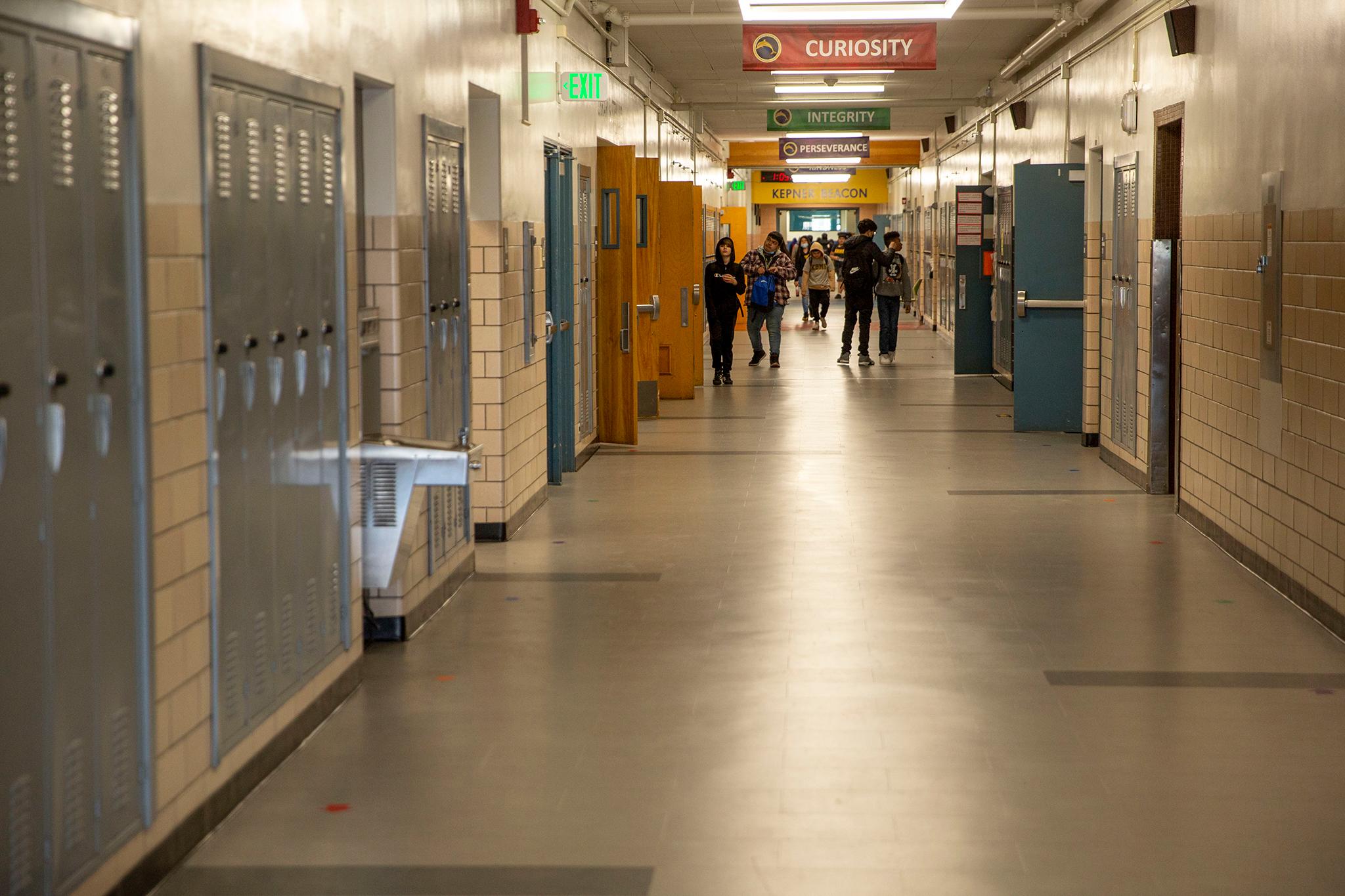Updated at 11 a.m. on Monday, June 2, 2025
The place formerly known as 16th Street Mall is open and ready for visitors.
But there’s a big question mark about the $175 million revitalization effort — how will people get there?
While the street is shiny and new, the ways to reach it — bus, train, micro-transit and car — are much the same, and so are their challenges.
Now, visitors say expensive parking and a lack of trustworthy public transit to downtown is a significant damper on Denver’s urban playground — a perception that officials fear could threaten the city’s big bet on 16th Street.
“If we stop coming downtown, then those businesses don't survive,” said Andrew Iltis, Downtown Denver Partnership’s senior vice president for planning and community impact.
Finding a perfect solution won’t be easy. And while many want cheaper parking, those in Denver transit circles argue the city should be focused on improving multimodal solutions like better buses and bike lanes. Meanwhile, planning for downtown’s next big changes is already underway.
Parking downtown is plentiful but it’s expensive and confusing for visitors.
Walking around downtown, you’ll see there isn’t exactly a lack of parking. The Downtown Denver Partnership has found that the areas surrounding 16th Street are home to nearly 21,500 parking spaces.
But Iltis said he still hears about frustration from the public.
“I understand that completely because you look around and every single parking operator has a different price, it has a different sign, it has a different entrance, or it's a different quality,” he said.
Even getting to a garage can be frustrating, Iltis said, due to construction across downtown.
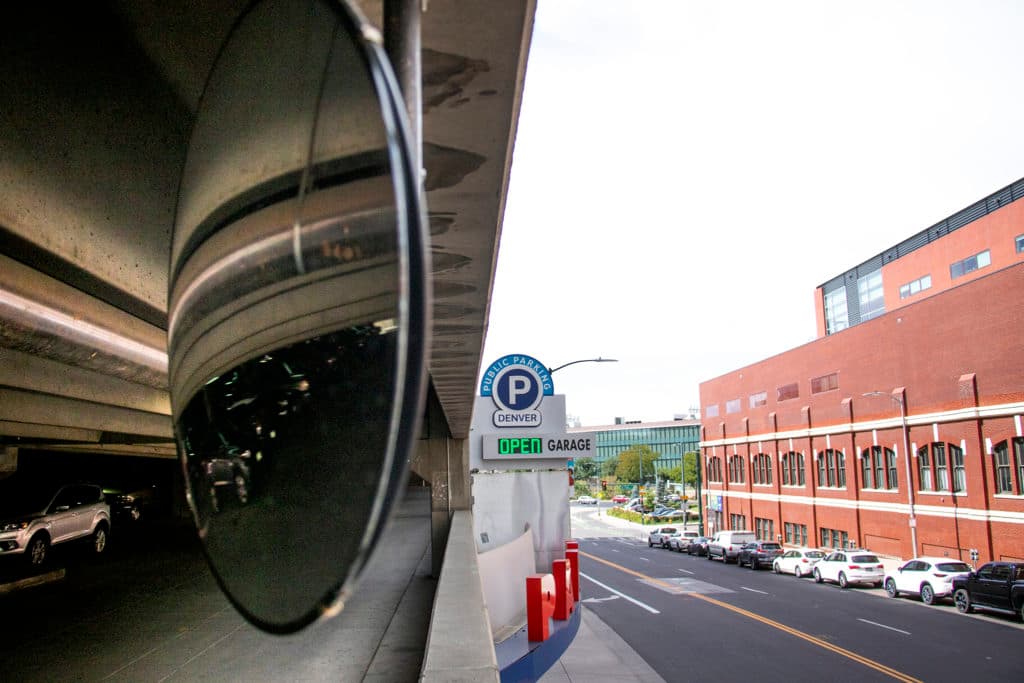
Tiffany Hopson, a Park Hill resident, said the confusing parking landscape and traffic are a major reason why she opts to take two buses into downtown instead of driving.
“Twelve dollars, $30 for two hours? I always see the parking garages, like people just pulling out, but they've been empty lately, so I'm hoping nobody giving up they money,” Hopson said.
DDP has found the average daily rate for a surface lot in downtown is $12.51. For garages, it more than doubles. A study by Parkopedia found Denver had the 20th most expensive parking garages worldwide, on par with cities like San Diego, Miami, Newark and Nashville.
In contrast, Denver’s public on-street parking is relatively cheap. At $2 an hour, it’s nowhere near the top 50 in the HubSpot report, but it’s harder to find and is only available for shorter stints.
Krystie and Kealoha Campbell own Kealoha's BBQ, a food stall that operates out of the “Outer Space” at 16th Street and Welton Street.

When they first opened in 2019, they opted for cheaper street parking, but it came at the cost of convenience.
“We would be running late when we have a rush and then we run out to put the change in the meter and then we get a ticket already,” Krystie Campbell said.
Thanks to some deft negotiating from their former landlord, the Campbells and other businesses can now park nearby for free. But they still hear horror stories from customers and fellow workers about parking.
Meanwhile, Hopson goes to 16th Street two or three times a week. She said that would probably increase if getting there was easier. Her bus route takes about 30 minutes on a good day.
“I am catching the bus and somebody's coming with me and we are using everybody's hands,” she said.
Iltis advised downtown visitors to come prepared if they plan to park. He said apps like Parkopedia and The Parking Spot can help find the cheapest option available and ensure you’re not driving around downtown aimlessly looking for the best deal.
After the pandemic, transit ridership dropped.
Dozens of Regional Transportation District routes serve downtown, often dropping passengers near their destinations at a fraction of the cost of gas and parking.
But for years, riders have decried RTD service as unreliable. Until recently “slow zones” have brought certain stretches of light rail routes to just 10 mph.
RTD data shows ridership across its various services has dropped severely since the pandemic. In 2019, the agency reported a total ridership of about 106 million people. Last year, it was just 65.2 million.
Meanwhile, more people than ever are commuting downtown in cars, while just 17 percent of commuters use public transit, Iltis said.

“We see that in our travel survey — people reporting that they don't feel safe, they don't feel comfortable riding RTD, and it's not convenient, reliable enough for them,” Iltis said. “We see those responses and all of that is playing into this sort of shift towards people parking in downtown.”
Juzette Austria and her two-year-old son, Chase, took an RTD train from Green Valley Ranch. She said she’d like to come downtown more often, but the commute takes a lot of planning and parking is too expensive.
“[I leave] probably a couple hours in advance at least,” she said.
What about bikes and micromobility?
Iltis commutes from his home in southeast Denver to DDP’s office via bike.
He’s been doing it for four years — long enough, he said, that “I have anxiety when I get in my car and drive downtown because it is complicated.”
Biking, one of Colorado’s favorite pastimes, is one of the few methods of transportation that has held steady in the post-pandemic landscape. Iltis attributes that to its affordability and the city’s investment in bike lanes.
“If you live within two miles, maybe even three miles of downtown, find a friend who bikes in all the time and try it out with them, because the system has changed rapidly in the last several years to add more biking facilities,” he said.
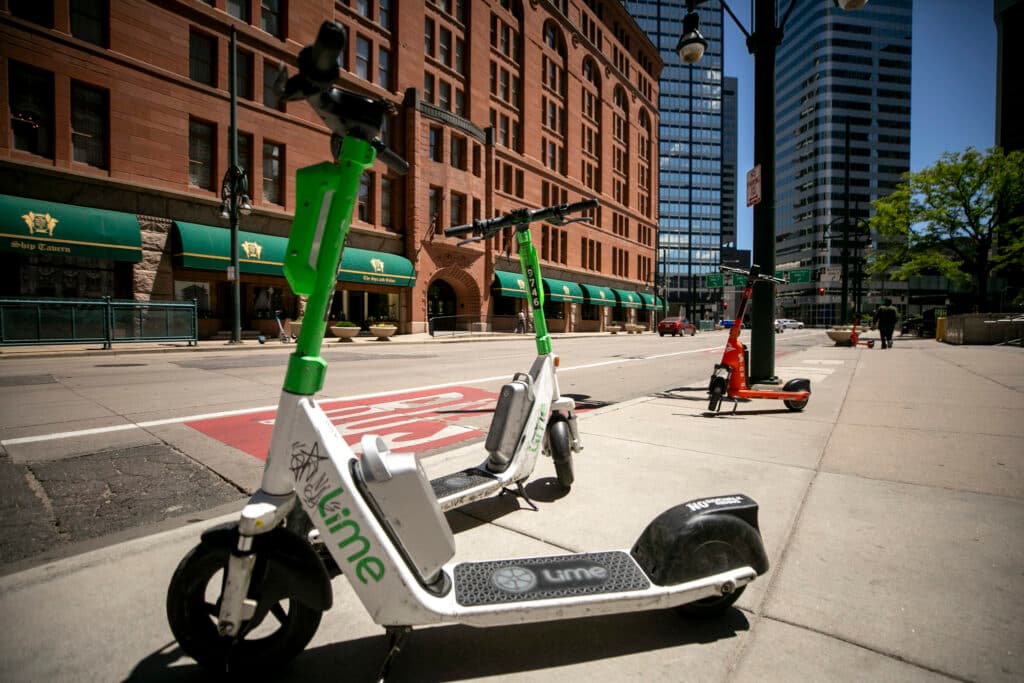
Denver has been building hundreds of miles of bike lanes, often on side streets, and city planners have been floating a plan to build out bike infrastructure on the city’s major corridors, like Speer, Leetsdale, and Broadway.
Bike advocates say the city’s bike infrastructure journey is far from complete, and building out more bikeways across the city, especially downtown, will make it more enticing for new bikers to head downtown.
“The city should continue to build out the bike network downtown so that it's easier for people to not only get to downtown, but around downtown on a bike,” said Jill Locantore of Denver Streets Partnership.
DDP has found that rentable e-bikes and scooters are a popular choice among visitors, while commutes from surrounding neighborhoods into downtown using those apps are rare. In 2024, there were over 2.2 million trips ending in downtown.
Downtown needs the visitors.
Recent stats don’t paint a bright picture of the state of downtown.
Multiple metrics measuring activity in downtown are down compared to pre-pandemic levels — from hotel and office occupancy to residential leasing to event attendance.
Iltis said making it easier to get downtown — whether on foot, or via public transit or car — will undoubtedly make those metrics go up by enticing office workers back to in-person work or bringing families in for weekend dinners.
Not everyone needs to travel to downtown. The residential population of the city has grown to nearly 103,000. Iltis said many new residents don’t own cars, instead renting them when needed.
“Not everybody goes to the mountains,” he said. “You want to go to the fun breweries, go to the great parks on a bike or using transit.”
What’s the future of mobility in downtown?
Those wishing for a car-free downtown — or, in contrast, a world of free parking — are likely to be disappointed. For better or worse, Iltis said Denver and its downtown will always have to account for cars, and garages will always charge for parking.
But some big ideas are showing up as the city updates the Downtown Area Plan. Early proposals include:
- Creating a “park once, move around mentality” to make it easier for people to get around on a “clear central city transit network” once they park.
- Designing “safe streets” centered on people, such as by turning Arapahoe Street into a “multimodal greenway that prioritizes pedestrians and bicycles,” or converting Curtis Street into a “primary pedestrian corridor” between 16th Street and the Denver Performing Arts center.
- Converting some one-way streets, such as Welton, 20th and Lincoln streets, to two-way streets, which could slow down automobile traffic and improve traffic flow.
- Enhancing “transit and mobility options” between the central Denver neighborhoods.
The $300 million Colfax Bus Rapid Transit project could also make it easier for people on the east side of town to reach downtown via transit — though it will also reduce automobile lanes on one of Denver’s busiest corridors.

Iltis said the city and its partners need to work together to make downtown look more inviting for commuters.
“We need to increase the access through legibility, making it feel better, making it easier to park and feel safer to park,” he said. DDP has recommended funneling parking revenue into transit and pedestrian improvements.
Transit advocates like Richard Bamber, the co-founder of Greater Denver Transit, say RTD needs to have better, more reliable transit to bring people frustrated by parking downtown into the district. Bamber’s group has proposed a plan for the city and RTD to fully revamp the downtown bus network to be more reliable and coherent.
“The downtown bus network right now feels like a secret out there, like a secret transportation system that only the people that bother to study it get in and are able to use it,” he said. “And that doesn't really go with the whole ‘transit for all’ mantra, does it?”
One thing’s for sure — all roads lead to downtown. It’s up to you which one you’ll take.
Editor's note: This article was updated to correct the name of Greater Denver Transit.


